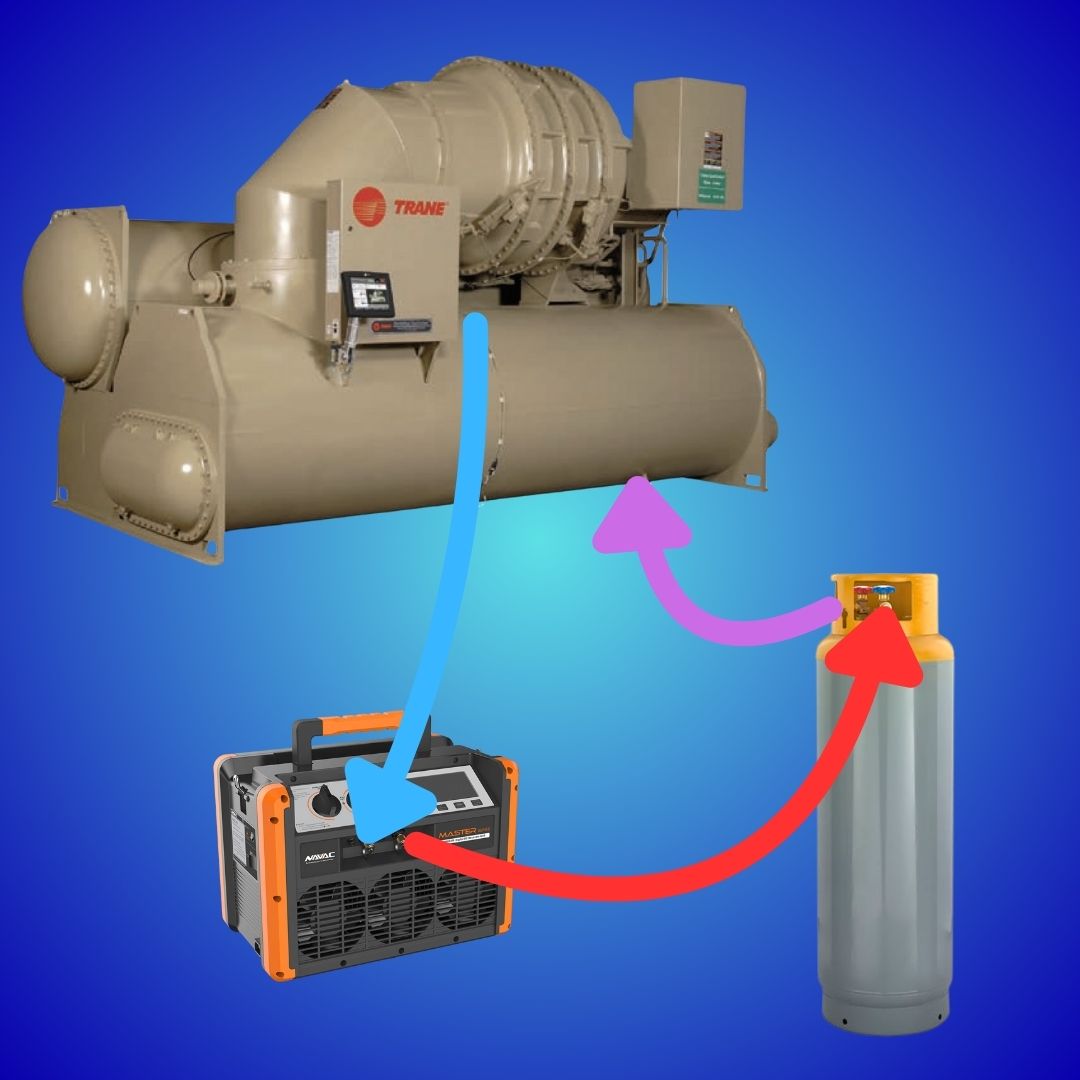The art of using push pull to move refrigerant has been around for a long time, but forgotten by many and understood by few. In this chiller training I will explain how to use push pull for charging a water cooled chiller.
Let's get right to how to arrange your hoses. From the top of the evaporator you will connect to the service valve and go to the inlet of your recovery machine. Connect a hose from the outlet of the recovery machine to the vapor port of the refrigerant cylinder. Then connect a hose from the cylinder liquid port to the chillers charging port. The charging port will be a large port, typically 1’ in size, connected to the bottom of the evaporator barrel.
If you would like more in-depth Chiller training for troubleshooting, design, and terminology in a Chiller Community. Go to chilleracademy.com where there are courses that are built to be at your pace and your needs.
By doing this you are pulling vapor from the top of the evaporator to push it into the refrigerant cylinder so that the liquid gets pushed out of the cylinder and into the evaporator. You can use this to get the full system charge in except for the final vapor. When you get down to only vapor left in your refrigerant cylinders then you would rearrange your hoses to do a direct charging method.

Some refrigerant cylinders do not have pressure ports, specifically with low pressure refrigerants, as they are just a drum of refrigerant. In this circumstance instead of doing a push pull you will need to treat this as a direct charging. Typically one of the drum openings will be a 3/4 fitting that you can install adapters to. Being a low pressure refrigerant, be sure to be quick about this and minimize its exposure to the atmosphere so that you don't have to fight with non-condensables when charging is finished.
There is a separate but unorthodox method of charging via gravity for the liquid charge. This will be a separate discussion of its own and not always feasible given the cylinders and your working conditions.
Be sure to follow safe refrigerant handling practices and only charge as much as the chiller is rated to operate with. As a precaution it is always recommended to flow water when charging a chiller, especially if you are new to this process. It is not worth the risk of damaging the evaporator. It is best to use the largest hoses you can with no core depressors or any other restrictions in line. Aside from a scale, a sightglass inline on your liquid hose can help you determine when you have finished flowing liquid refrigerant.

